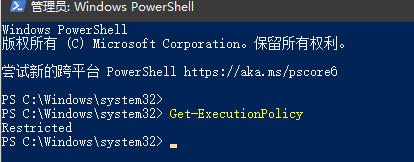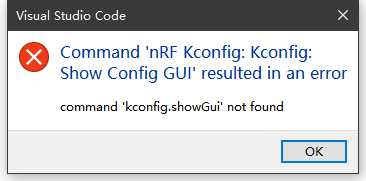Foreword
之前刚好看过一点VScode插件原理,这里就能用上了,看一下nRF-Kconfig是怎么实现的,改一个通用版本来,方便大家使用
nRF-Kconfig
Kconfig插件的安装目录在这里
C:\Users\用户名\.vscode\extensions\nordic-semiconductor.nrf-kconfig-2024.12.13
实际这个插件也没有加密或者混淆什么的,可以直接看
尝试build
"scripts": {
"vscode:prepublish": "npm run build && npm run changelog",
"build": "rimraf dist && tsx ./scripts/build.js --production",
"watch": "tsx ./scripts/build.js --watch",
"dev": "tsx ./scripts/build.js --watch",
"type-check": "tsc --noEmit",
"lint": "tsx ../scripts/lint.ts nrf-kconfig",
"lintfix": "tsx ../scripts/lint.ts --fix nrf-kconfig",
"changelog": "tsx ../scripts/changelog.ts kconfig",
"copyright": "npm run --prefix ../ copyright",
"buildHeaderFiles": "tsx ../scripts/buildHeaderFiles.ts",
"update-build-number": "node ../scripts/updateBuildNumber.js kconfig",
"copy-css": "copyfiles \"src/**/*.css\" \"src/**/*.scss\" out/nrf-kconfig && copyfiles \"../common/src/**/*.css\" \"../common/src/**/*.scss\" out/common",
"build-tests": "tsc -p . --outDir out",
"watch-tests": "tsc -p . -w --outDir out",
"pretest": "npm run build-tests && npm run build && npm run copy-css",
"test": "node ./out/nrf-kconfig/test/runTests.js"
},
直接使用Package.js中的script部分,可以直接build或者prepublish
可能会遇到下面的错误
npm : 无法加载文件 D:\nodejs\npm.ps1,因为在此系统上禁止运行脚本
查看脚本允许策略,可以看到返回值是严格,这样不允许npm调用ps1的脚本
Get-ExecutionPolicy

修改策略,改为允许远程运行
Set-ExecutionPolicy RemoteSigned

修改完成,再次进行build,正常了

依然提示缺少rimraf命令,但是至少说明脚本跑起来了,这个问题后面再处理
安装一下rimraf就行了,实际上后续还会有tsx也缺少,一起都安装了
npm install --save rimraf
npm install --save tsx
继续往下跑就会发现,这样copy的代码缺少一个script文件夹,这里面包含了各种打包的脚本文件,这里只能先到此为止了
源码分析
{
"contributes": {
# 这里注册了各种使用的按钮
"commands": [
{
"command": "kconfig.add",
"category": "nRF Kconfig",
"title": "Kconfig: Add build folder"
},
{
"command": "kconfig.showGui",
"category": "nRF Kconfig",
"title": "Kconfig: Show Config GUI"
},
{
"command": "kconfig.goToSymDefinition",
"category": "nRF Kconfig",
"title": "Go to Symbol Definition"
},
{
"command": "kconfig.expandSubtree",
"category": "nRF Kconfig",
"title": "Expand Subtree"
},
{
"command": "kconfig.collapseSubtree",
"category": "nRF Kconfig",
"title": "Collapse Subtree"
},
{
"command": "kconfig.ctx.setActive",
"category": "nRF Kconfig",
"title": "Set Active Context",
"icon": "$(edit)"
}
],
"menus": {
"webview/context": [
{
"command": "kconfig.goToSymDefinition",
"when": "canGoToSymDefinition == true"
},
{
"command": "kconfig.expandSubtree",
"when": "canExpandSubtree == true"
},
{
"command": "kconfig.collapseSubtree",
"when": "canCollapseSubtree == true"
}
],
"commandPalette": [
{
"command": "kconfig.goToSymDefinition",
"when": "never"
},
{
"command": "kconfig.expandSubtree",
"when": "never"
},
{
"command": "kconfig.collapseSubtree",
"when": "never"
}
],
"view/item/context": [],
"editor/context": []
},
"submenus": [],
# 这里是一些这个插件的一些设置参数
"configuration": {
"title": "nRF Kconfig",
"type": "object",
"description": "Settings for nRF Kconfig",
"properties": {
"kconfig.zephyr.base": {
"type": "string",
"description": "Override location of Zephyr. This is only necessary if you want to use nRF Kconfig by itself and the main extension is not installed.",
"scope": "machine-overridable"
},
"kconfig.python": {
"type": "string",
"markdownDescription": "Location of Python executable. Python 3 is required to use nRF Kconfig. If no location is specified, then the `PATH` of the current workspace is used.",
"scope": "machine-overridable"
},
"kconfig.liveValue": {
"type": "boolean",
"description": "Show changed values in conf files as ghost assignments on the same line as their original assignment.",
"scope": "application",
"default": true
}
}
},
# 这里主要是对文件解析和提示的配置,什么类型文件才会被调用解析器进行解析、高亮、补全等
"languages": [
# language定义一个数组,每个数组表示一种支持的语言类型
{
# id是每个语言的标识符
"id": "kconfig",
# 别名
"aliases": [
"Kconfig"
],
# 特指文件名
"filenames": [
"Kconfig"
],
# 特指符合某些规则的文件名
"filenamePatterns": [
"Kconfig.*"
],
# 这个里面是语言的具体规则,应该是内容识别的规则(折叠段识别)
"configuration": "./language-configuration.json",
"icon": {
"dark": "./dist/images/dark/kconfig.svg",
"light": "./dist/images/light/kconfig.svg"
}
},
# 下面是特指了一些文件内容,相当于是exclude,排除了某些文件
# 单独指定了他们是什么类型的语言文件,防止误识别
{
"id": "python",
"filenamePatterns": [
"Kconfig.py"
]
},
{
"id": "cmake",
"filenamePatterns": [
"Kconfig.cmake"
]
},
{
"id": "css",
"filenamePatterns": [
"Kconfig.css"
]
},
{
"id": "properties",
"filenamePatterns": [
"*_defconfig",
"*.conf",
".config",
".config.sysbuild"
]
}
],
"viewsWelcome": []
},
"__metadata": {
"id": "3c214a32-71ea-4549-a492-0f972af076a5",
"publisherId": "c9e8387e-6a8a-4101-bcc0-52d8bf37ca83",
"publisherDisplayName": "Nordic Semiconductor",
"targetPlatform": "undefined",
"isApplicationScoped": false,
"isPreReleaseVersion": false,
"hasPreReleaseVersion": false,
"installedTimestamp": 1734425172758,
"pinned": false,
"preRelease": false,
"source": "gallery",
"size": 2490675
},
# 前面安装的几个依赖的模块,这里其实有提示
"dependencies": {
"rimraf": "^6.0.1",
"tsx": "^4.19.2"
}
}
重点还是看kconfig.showGui做了些啥
正常应该有一个js调用的脚本,但是没找到,只看到了py文件,找到了py的入口,直接让Copilot帮我分析了一下,大致是启动了一个LSP的语言分析(language symbol phrase)服务,然后这个服务和什么东西用的是rpc通信。
if __name__ == "__main__":
args = parse_args()
srv = KconfigServer()
sys.stdout = srv.log
sys.stderr = srv.err
print("Server starting")
if args.debug:
wait_for_debugger()
if args.log:
srv.logging = True
srv.loop()
目前看起来这个LSP服务主要是用来做代码提示、符号信息、Kconfig内容查找?,不知道和具体文件解析有没有关系。
syntaxes下的kconfig.tmGrammar.json是kconfig高亮的配置文件
目前看应该还有一个前端或者是什么东西,通过rpc通信,将符号信息送给Kconfig进行分析,然后返回对应的信息
比如平常常用的查找定义,客户端发送请求,指定文件和符号所在行和字符(这里为啥不用指定字符的长度?不是很懂)
{
"jsonrpc": "2.0",
"id": 1,
"method": "textDocument/definition",
"params": {
"textDocument": {"uri": "file:///path/to/file"},
"position": {"line": 10, "character": 5}
}
}
KconfigServer接收请求并处理
@handler('textDocument/definition')
def handle_definition(self, params):
sym = self.get_sym(params)
if sym:
return loc(sym)
KconfigServer接着发送响应
{
"jsonrpc": "2.0",
"id": 1,
"result": [
{
"uri": "file:///path/to/definition",
"range": {
"start": {"line": 5, "character": 0},
"end": {"line": 5, "character": 10}
}
}
]
}
客户端接收并处理响应,跳转到符号定义位置,那么这次通信就算完成了
但是这个问题,似乎就是nRF Kconfig插件其实没加载,表面上看安装了,但是真正的加载和注册命令是需要extension的其他插件来完成的,虽然代码里写着独立运行,实际上并不可行
configuration: {
title: 'nRF Kconfig',
type: 'object',
description: 'Settings for nRF Kconfig',
properties: {
'kconfig.zephyr.base': {
type: 'string',
description:
'Override location of Zephyr. This is only necessary if you want to use nRF Kconfig by itself and the main extension is not installed.',
scope: 'machine-overridable',
},
'kconfig.python': {
type: 'string',
markdownDescription:
'Location of Python executable. Python 3 is required to use nRF Kconfig. If no location is specified, then the `PATH` of the current workspace is used.',
scope: 'machine-overridable',
},
'kconfig.liveValue': {
type: 'boolean',
description:
'Show changed values in conf files as ghost assignments on the same line as their original assignment.',
scope: 'application',
default: true,
},
},
},

contributes.ts中主要是用TS写的这个contributes的字段内容,打包过程中会被用来替换package.json中的内容。而submenus则是由build脚本填充的,由于缺少这一块,所以这里就空了
流程梳理
kconfiglsp.py中的KconfigServer类实现了一个Kconfig语言服务器协议(LSP)服务器。这个服务器通常由一个支持LSP的客户端(如Visual Studio Code或其他支持LSP的编辑器)调用和使用。以下是调用和使用kconfiglsp.py的典型流程:
1. 客户端(如VS Code)启动LSP服务器
当用户在支持LSP的编辑器中打开一个Kconfig文件时,编辑器会根据配置启动相应的LSP服务器。
在VS Code中,这通常通过package.json中的contributes和activationEvents字段配置。例如:
{
"contributes": {
"languages": [
{
"id": "kconfig",
"extensions": [".kconfig"],
"configuration": "./language-configuration.json"
}
],
"commands": [
{
"command": "extension.kconfigServer",
"title": "Start Kconfig Server"
}
]
},
"activationEvents": [
"onLanguage:kconfig"
]
}
- 这里的分析推敲,其实反向验证了package.json内的内容
2. 启动LSP服务器
当满足激活条件(如打开Kconfig文件)时,编辑器会启动LSP服务器进程。
这个进程会运行kconfiglsp.py中的代码,创建并启动KconfigServer实例。
3. 客户端与LSP服务器通信
启动后,客户端和LSP服务器通过JSON-RPC协议进行通信。
客户端发送各种LSP请求(如textDocument/didOpen、textDocument/didChange、textDocument/completion等)到服务器,KconfigServer类处理这些请求,并返回相应的响应。
4. 处理请求和响应
KconfigServer类中的方法(如handle_initialize、handle_completion、handle_definition等)处理来自客户端的请求。
5. 服务器发送通知
除了处理请求,KconfigServer还可以主动发送通知给客户端,例如发布诊断信息(publish_diags方法)或通知状态变化(notify_status方法)。
nRF-connect-extension-pack
由于上面所有的逻辑都是copilot直接给出来的,实际在这份工程中并没有找到对应的代码,所以不是清楚是怎么一步步调用kconfiglsp.py的。怀疑这部分的JS代码是直接内嵌在了nRF的整体扩展中,所以单独只安装一个kconfig插件是无法直接显示kconfig的结果的,必须要配合大插件包才能正常启动
这里再把nordic-semiconductor.nrf-connect-extension-pack-2024.9.5的包拿出来分析一下,看看具体内容是怎么来的
看了一下pack的package.json,发现他好像只是一个整合包,实际并没有什么具体的代码
{
"name": "nrf-connect-extension-pack",
"displayName": "nRF Connect for VS Code Extension Pack",
"description": "Recommended extensions for development with the nRF Connect SDK",
"publisher": "nordic-semiconductor",
"homepage": "https://docs.nordicsemi.com/bundle/nrf-connect-vscode/page/index.html",
"icon": "images/icon.png",
"version": "2024.9.5",
"bugs": {
"url": "https://devzone.nordicsemi.com"
},
"engines": {
"vscode": "^1.80.0"
},
"categories": [
"Extension Packs"
],
"extensionPack": [
"nordic-semiconductor.nrf-connect",
"nordic-semiconductor.nrf-terminal",
"nordic-semiconductor.nrf-devicetree",
"nordic-semiconductor.nrf-kconfig",
"ms-vscode.cpptools",
"trond-snekvik.gnu-mapfiles",
"twxs.cmake"
],
"main": "./dist/extension.js",
"activationEvents": [
"*"
],
"scripts": {
"vscode:prepublish": "npm run build -- --notypecheck",
"build": "rimraf dist && tsx ./scripts/build.js --production",
"lint": "tsx ../scripts/lint.ts connect-extension-pack",
"lintfix": "tsx ../scripts/lint.ts --fix connect-extension-pack",
"copyright": "npm run --prefix ../ copyright",
"dev": "tsx ./scripts/build.js --watch"
},
"__metadata": {
"id": "50d64e34-3ee8-4e0c-b79d-97a3eab4581d",
"publisherId": "c9e8387e-6a8a-4101-bcc0-52d8bf37ca83",
"publisherDisplayName": "Nordic Semiconductor",
"targetPlatform": "undefined",
"isApplicationScoped": false,
"isPreReleaseVersion": false,
"hasPreReleaseVersion": false,
"installedTimestamp": 1734424781886,
"pinned": false,
"preRelease": false,
"source": "gallery",
"size": 77034
}
}
再仔细看一下extension.js的代码
"use strict";
var objCreate = Object.create;
var objProperty = Object.defineProperty;
var objPropertyDescriptor = Object.getOwnPropertyDescriptor;
var objPropertyNames = Object.getOwnPropertyNames;
var objGet = Object.getPrototypeOf,
objHasOP = Object.prototype.hasOwnProperty;
var b = (n, e) => {
for (var t in e) objProperty(n, t, {
get: e[t],
enumerable: !0
})
},
d = (n, e, t, s) => {
if (e && typeof e == "object" || typeof e == "function")
for (let i of objPropertyNames(e)) !objHasOP.call(n, i) && i !== t && objProperty(n, i, {
get: () => e[i],
enumerable: !(s = objPropertyDescriptor(e, i)) || s.enumerable
});
return n
};
var f = (n, e, t) => (t = n != null ? objCreate(objGet(n)) : {}, d(e || !n || !n.__esModule ? objProperty(t, "default", {
value: n,
enumerable: !0
}) : t, n)),
C = n => d(objProperty({}, "__esModule", {
value: !0
}), n);
var y = {};
使用 b函数将属性从 source 对象定义到 target 对象上,而不是直接使用 source 对象,有几个好处:
封装和模块化:
- 通过将属性定义到
target对象上,可以更好地封装和模块化代码。这样可以避免直接暴露source对象的内部实现细节。
动态扩展对象:
- 可以动态地将属性添加到
target对象上,而不需要修改source对象。这在需要扩展对象功能时非常有用。
控制属性访问:
- 使用
Object.defineProperty可以精确控制属性的行为,例如设置属性为只读、可枚举等。在这个例子中,属性被定义为 getter 函数,并且是可枚举的。
避免命名冲突:
- 如果直接使用
source对象,可能会与现有对象的属性发生命名冲突。通过将属性定义到target对象上,可以避免这种冲突。
灵活性:
- 可以根据需要选择性地将某些属性定义到
target对象上,而不是将整个source对象暴露出来。
就是通过Object.defineProperty实现一个代理类,后续代码基本都是围绕这个目标来做的。
最终把一些按钮或者触发器注册进了VSCode,这些id就对应上了具体的界面按钮和后续的事件触发机制
可以看到就是在这里把kconfig相关的指令注册进去了,前面报的kconfig不存在,也是因为connect没有启动,这里没有加载

所以还是得去看connect部分的代码
nordic-semiconductor.nrf-connect
查看extension.js,格式化以后发现这个js的行数有12w,这就有点离谱了

copilot直接放弃工作了,让他读一下直接不会了
看了一下打包文件夹是dist,应该是套在某个框架上写完以后重新打包成了一个.js,所以这个内容就很难反向查了
Summary
还是重写一个更快,这里能借鉴的只有Kconfig LSP这个部分了
